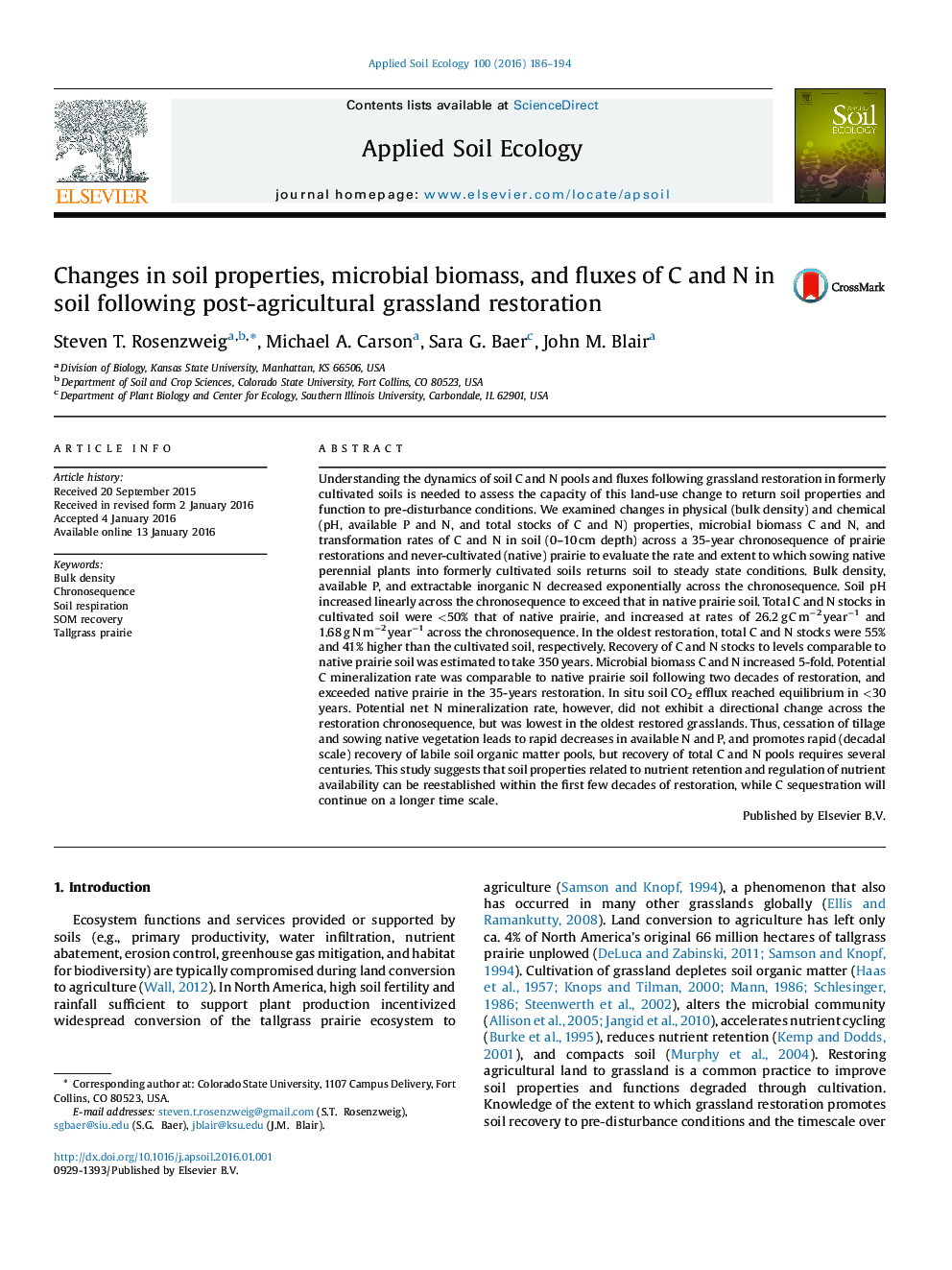| کد مقاله | کد نشریه | سال انتشار | مقاله انگلیسی | نسخه تمام متن |
|---|---|---|---|---|
| 4381814 | 1617783 | 2016 | 9 صفحه PDF | دانلود رایگان |

• Temporal dynamics of soil properties were examined in a restoration chronosequence.
• Bulk density and available N and P declined to new steady state levels.
• Microbial C and N pools increased 5-fold during the 3.5 decades of restoration,
• In situ soil CO2 efflux increased to equilibrium within the 35-year chronosequence.
• Recovery of total C and N stocks are predicted to take approximately 350 years.
Understanding the dynamics of soil C and N pools and fluxes following grassland restoration in formerly cultivated soils is needed to assess the capacity of this land-use change to return soil properties and function to pre-disturbance conditions. We examined changes in physical (bulk density) and chemical (pH, available P and N, and total stocks of C and N) properties, microbial biomass C and N, and transformation rates of C and N in soil (0–10 cm depth) across a 35-year chronosequence of prairie restorations and never-cultivated (native) prairie to evaluate the rate and extent to which sowing native perennial plants into formerly cultivated soils returns soil to steady state conditions. Bulk density, available P, and extractable inorganic N decreased exponentially across the chronosequence. Soil pH increased linearly across the chronosequence to exceed that in native prairie soil. Total C and N stocks in cultivated soil were <50% that of native prairie, and increased at rates of 26.2 g C m−2 year−1 and 1.68 g N m−2 year−1 across the chronosequence. In the oldest restoration, total C and N stocks were 55% and 41% higher than the cultivated soil, respectively. Recovery of C and N stocks to levels comparable to native prairie soil was estimated to take 350 years. Microbial biomass C and N increased 5-fold. Potential C mineralization rate was comparable to native prairie soil following two decades of restoration, and exceeded native prairie in the 35-years restoration. In situ soil CO2 efflux reached equilibrium in <30 years. Potential net N mineralization rate, however, did not exhibit a directional change across the restoration chronosequence, but was lowest in the oldest restored grasslands. Thus, cessation of tillage and sowing native vegetation leads to rapid decreases in available N and P, and promotes rapid (decadal scale) recovery of labile soil organic matter pools, but recovery of total C and N pools requires several centuries. This study suggests that soil properties related to nutrient retention and regulation of nutrient availability can be reestablished within the first few decades of restoration, while C sequestration will continue on a longer time scale.
Journal: Applied Soil Ecology - Volume 100, April 2016, Pages 186–194